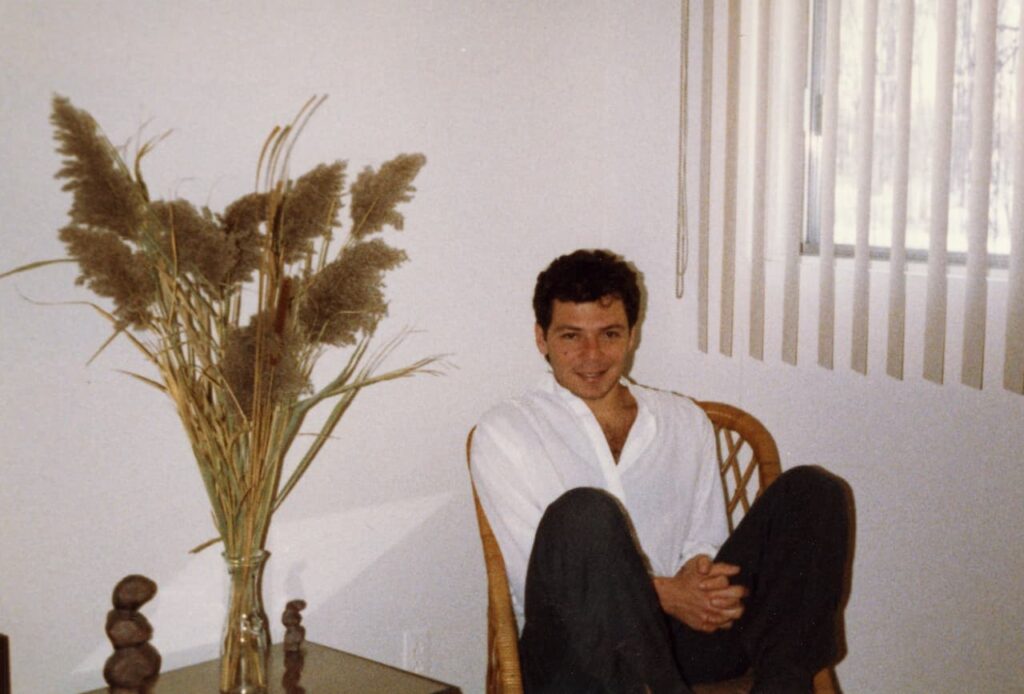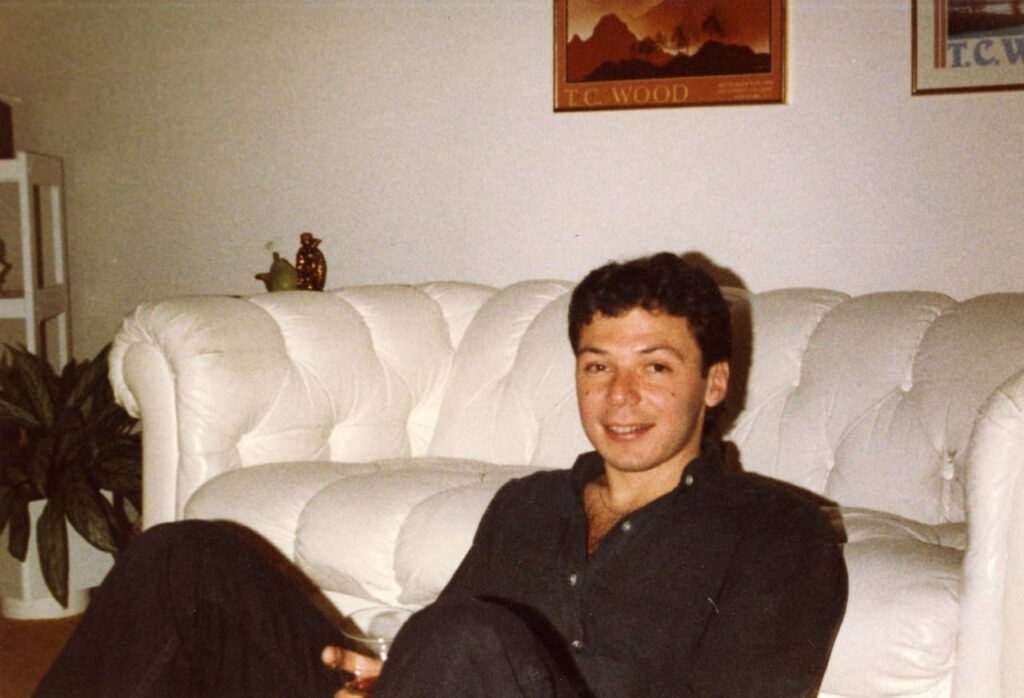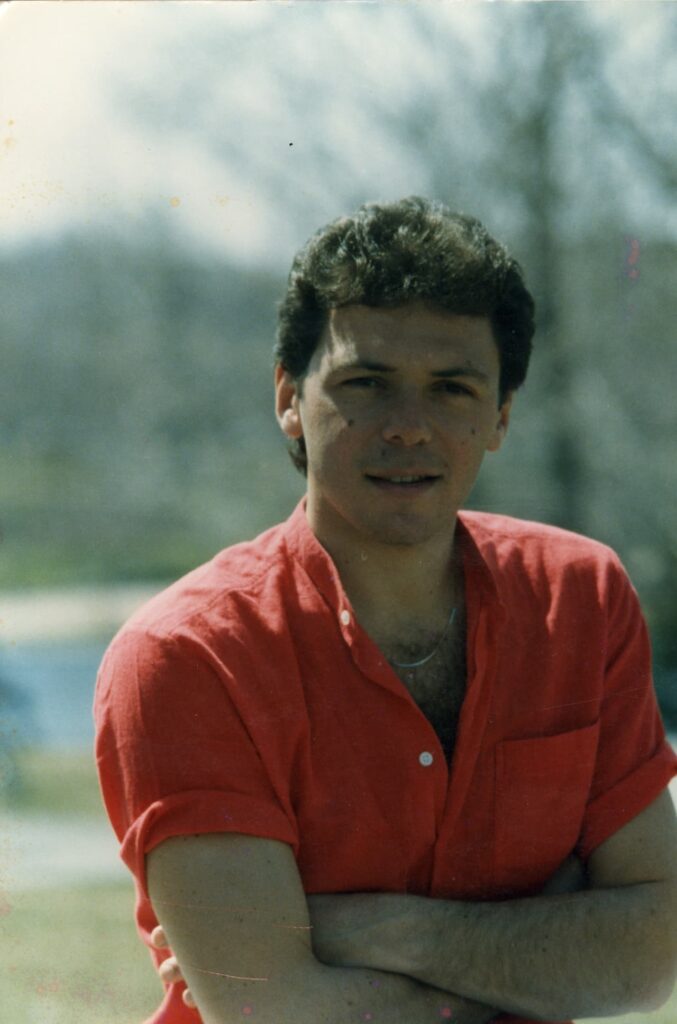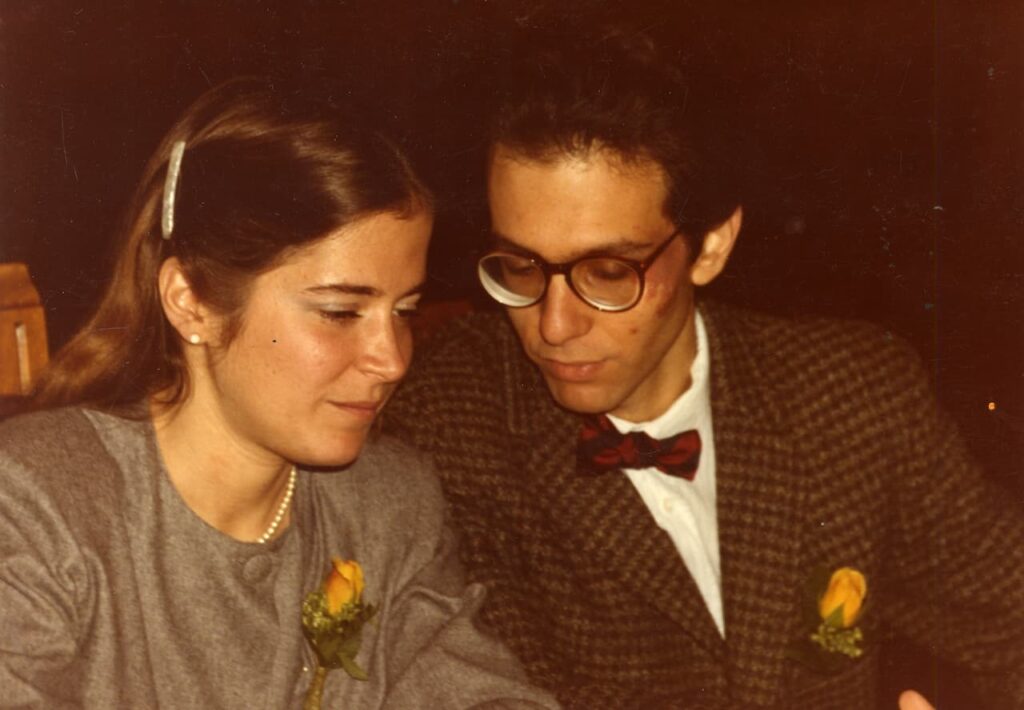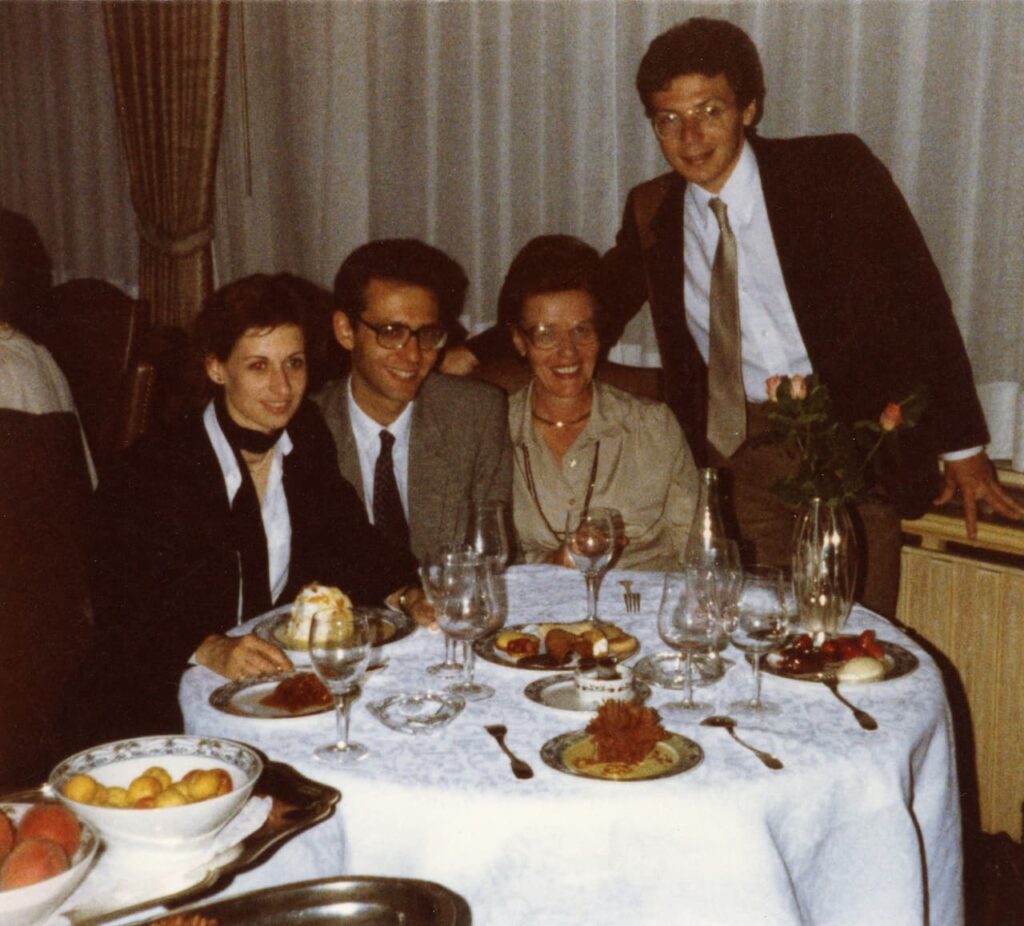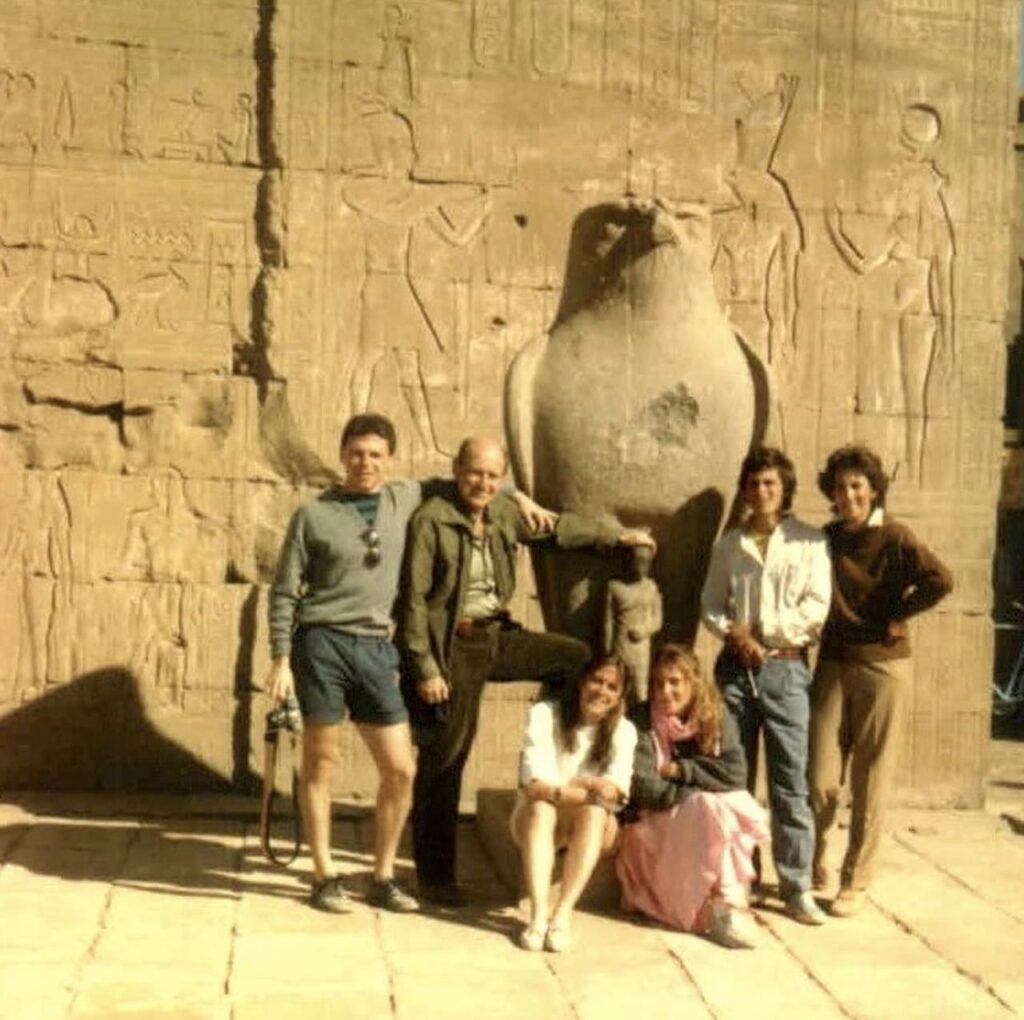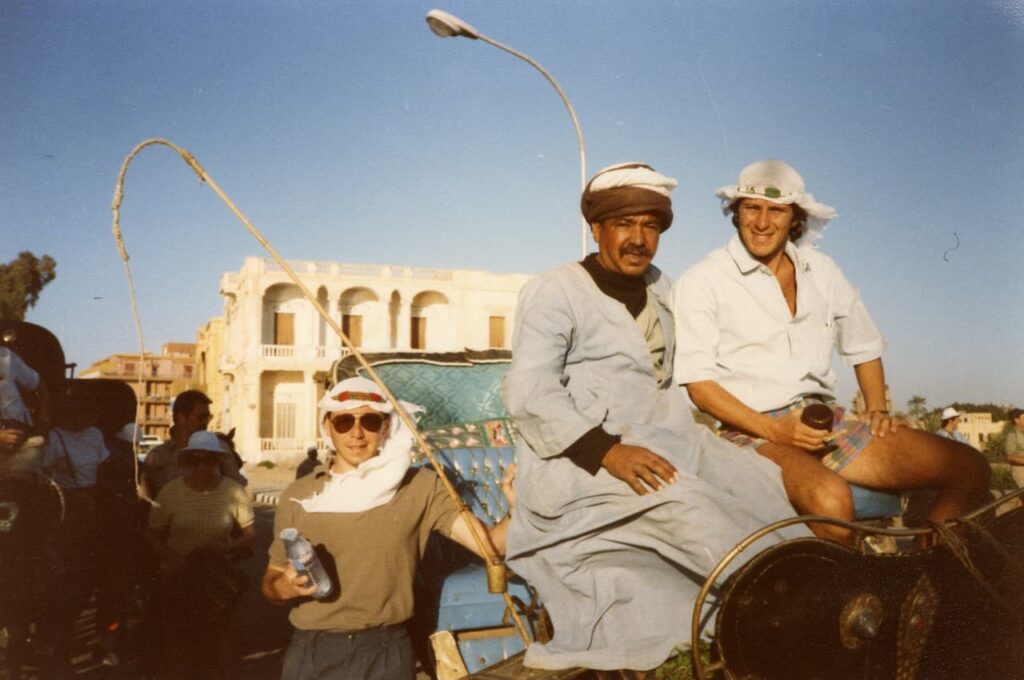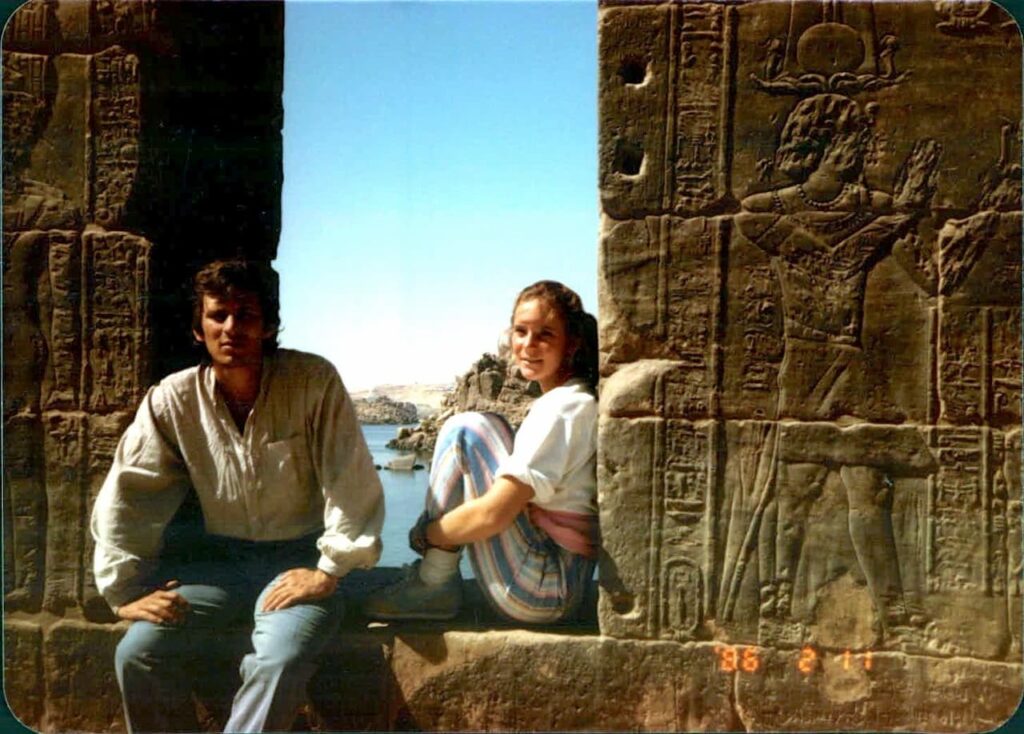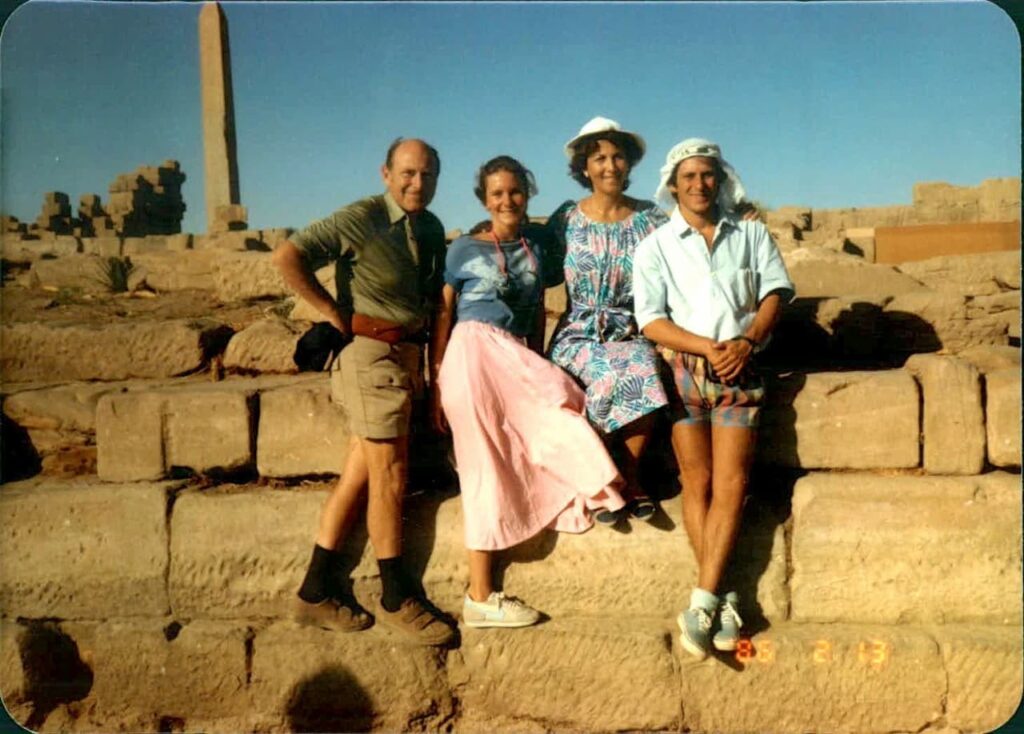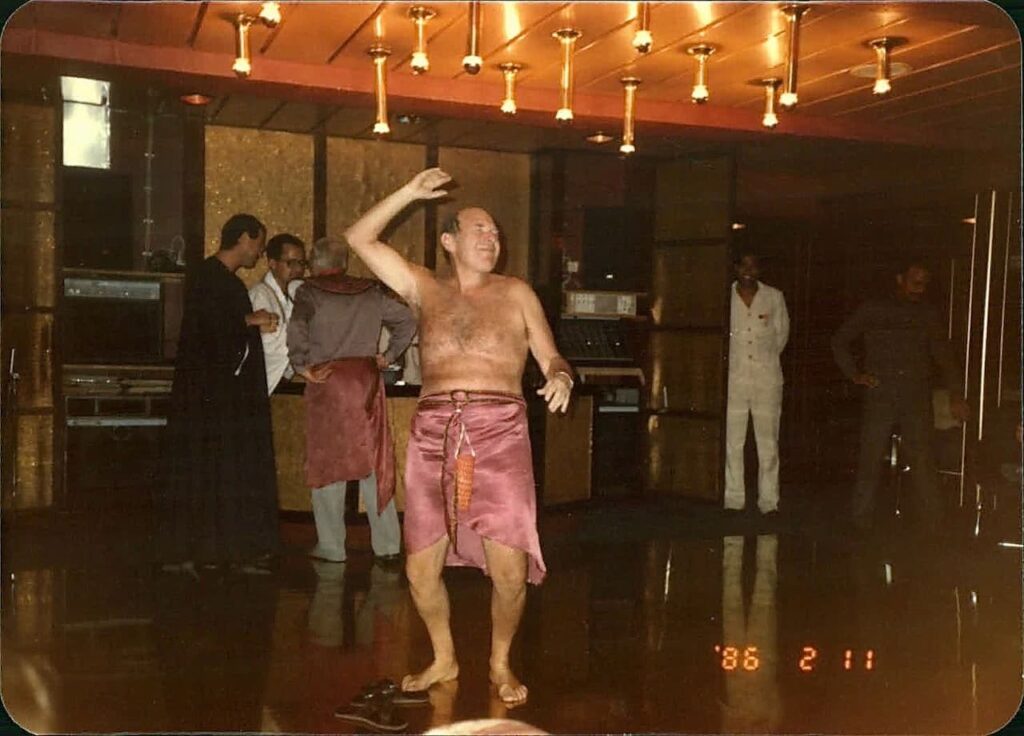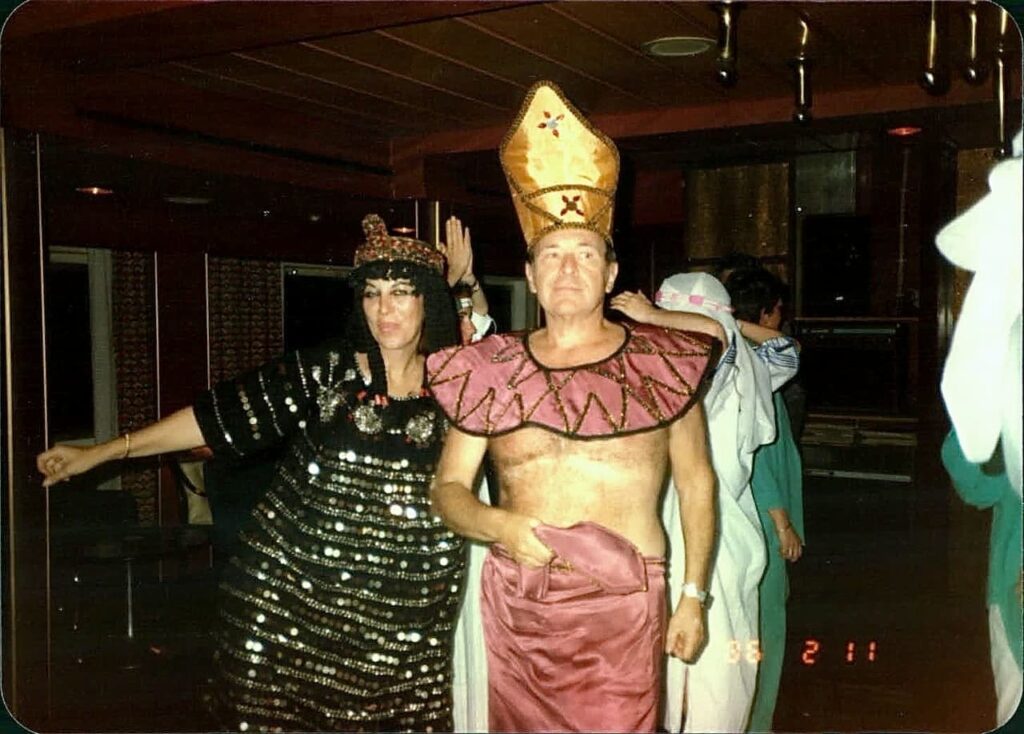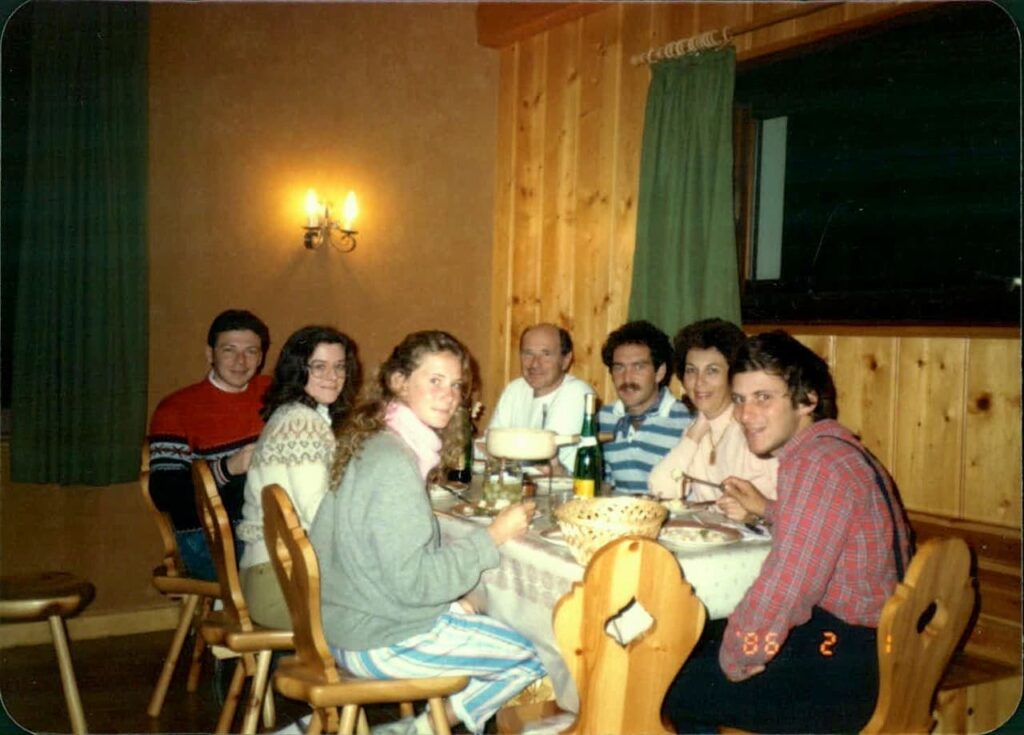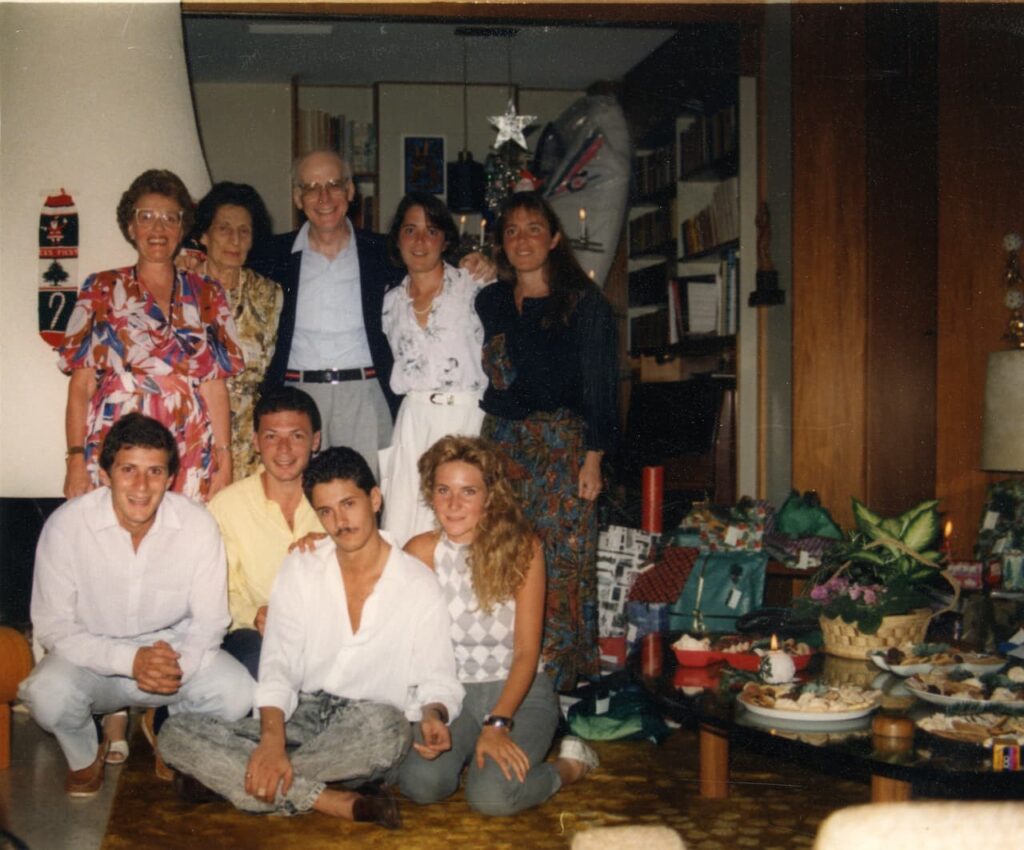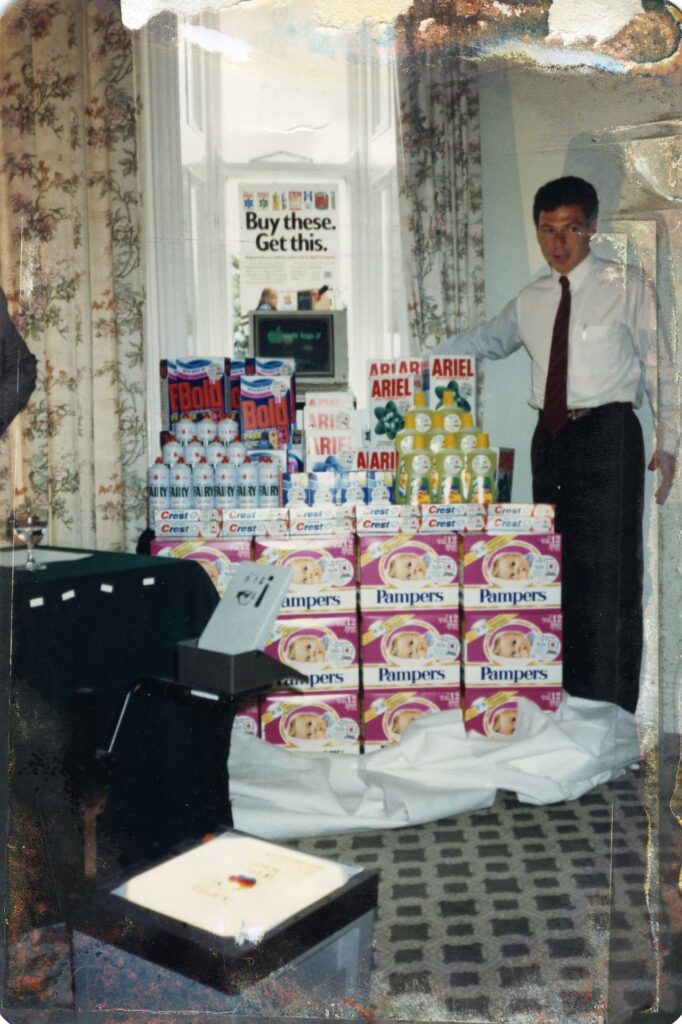It was during my stay in Canada that I met Josée, my first wife. She was from a well-established Québecois family—the first Bélanger had arrived from Normandy and settled in Montréal in the XVIIIth century. She had nine siblings, including an identical twin sister. We met during a sales conference in Toronto. Josée had joined the P&G sales team in Montréal, at about the same time that I had arrived in Canada.
I was immediately struck by Josée’s beauty, energy and ideas. She was authentic and very lively. After meeting her during the sales conference, I wrote to her, asking whether I could come by for a visit on my way back to Europe. She agreed, and our story began in March, 1984.
Josée and I initiated a very intensive and creative correspondence, and she visited me in Geneva during the summer of 1984. We toured Europe together for three weeks, and decided to marry at the end of the same year. It was a quick decision, fuelled not only by very real and intensive feelings of love, but also by the impossibility of keeping a long-distance relationship alive at a time when phone calls were impossibly expensive, and flights were prohibitive.
Our wedding took place in Geneva on December 1. Paul, Sylvia and Lisl were present, as well as Michèle, Josée’s twin sister. It was a small, but very beautiful wedding. Through an extraordinary coincidence, Fer and Brigitte married at almost the same time, also in Geneva. Josée and I spent Christmas and New Year 1984 in Buenos Aires and Punta del Este.
Paul was excited about the family ‘expansion’ and proceeded to organise trips around Europe, in order to get everyone together. In January 1985, Edi, Sonia, Josée and I accompanied Paul and Sylvia to Egypt, a magnificent trip that left me deeply impressed with the richness of the local culture, especially Ancient Egypt. I was amazed by how well the buildings, many of them over 3,000 years old, had been preserved. And the culture of the ancient Egyptians, with their belief in polytheistic gods, and their elaborate rituals, got me thinking about our own culture. I bought Living and Ancient Egypt and Dying in Ancient Egypt, which I devoured as soon as I got back to Geneva. Before returning to Argentina, Paul rented a chalet in Chamonix for the month of February, so we saw the family often. Carlos and his girlfriend came from Argentina and Tommy Perlberger, Sylvia’s nephew, who was in Paris at the time, also joined us.
Over the coming years, Paul would do everything possible to get us all together. For him, ‘family’ always included the partners of his children. He made no difference between married and unmarried couples and was extremely generous towards everyone. In December 1985, he invited Michele, Josée’s twin sister, to Buenos Aires and Punta del Este. It was a very memorable Christmas, and Michele, as Josée before her, was very impressed by the warmth with which she was received by the family. Despite the fact that by this time Paul and Lisl had been divorced for seven years, Paul was always present at Christmas and Lisl welcomed him as though he had never left.
I received a hero’s welcome at the P&G office when I returned from Vancouver to Geneva in March 1984. The whole of E&SO had heard of my achievements in Canada. Several of the General Managers came to see me and Samih Sherif, the E&SO President, took the unusual step of inviting me to his office to personally congratulate me.
Samir Ayash invited me out to lunch. He confessed that his bullying before my departure had been ‘a bit of theatre, of course you would have returned to Geneva, no matter what you had done in Canada’. But, he added, ‘kicking you in the ass’ had worked and he was proud of the way I had ‘opened Canada’ for him. Indeed, over the coming years, many more Geneva Marketing Assistants would be sent to Canada, although no one again won a national sales award.
At my request, I was assigned to the Irish business. I had wanted an assignment that was not too far away from Geneva, because I sensed that my relationship with Josée was serious. If she moved to Geneva, I didn’t want to be gone for weeks, as happened to marketing people who were working on markets in Asia, the Middle East or Africa.
Ireland was a poor and backward country at the time, but P&G’s position was dominant. It was very difficult to grow the business from this position of strength, and P&G had been losing market share for a few years.
One day, I read in the local Irish press that Apple had recently opened a manufacturing plant in Cork and were eager to expand the penetration of the Macintosh, which had been launched globally earlier in the year. At the time, Apple was not in good shape—IBM was totally dominating the rapidly expanding PC market.
I contacted Apple and suggested to the Marketing Manager that we run a joint promotion under the title of ‘An Apple in every school’. The idea, I said, was to penetrate the school system and make all Irish children computer-literate. I said that P&G would pay for the advertising, but that Apple would have to provide the computers (one per school) and the training of students for free. The manager was intrigued and a few days later called to say yes, we’ll participate. It turned out to be one of the most impactful promotions ever run in Ireland.
Through a large advertising campaign, we encouraged children and their parents to collect proofs of purchase of P&G brands and take them to their schools. When the school had reached 1,000 proofs of purchase, they could contact Apple and get their computer for free.
There were many reports of children accompanying their parents to the supermarket with a list of P&G brands, instructing them which brands to buy, so that the school could get their computer. In very Catholic Ireland, most people attended church on Sundays, and there were numerous reports of priests mentioning the promotion in their sermons, waving a paper from their pulpits with the list of P&G brands and saying to the congregation that it was ‘the duty of every good Christian to support their children by buying these products’.
At the end of the promotion, over 80% of Irish schools had qualified for their Apple Macintosh. The P&G business soared. Never again would P&G achieve such high market shares as in the aftermath of this promotion. And never were its brands more loved.
To this day, Ireland is the country in Europe with the highest penetration of Apple products. Thanks to the ‘Apple in every school’ promotion, generations of children took their first steps in computing with Apple and never left the brand. For years afterwards, the Irish Marketing Manager wrote to me every Christmas, reporting on how well Apple was doing, and thanking me for the work we had done together.
This promotion opened my eyes to the good that could be achieved by the private sector, especially when companies worked together cooperatively, something that is much more common today than it was in the 1980s. I would focus on developing more ideas like these in later years, when I worked in advertising.
The River
Pedro Simko

The River
Pedro Simko

